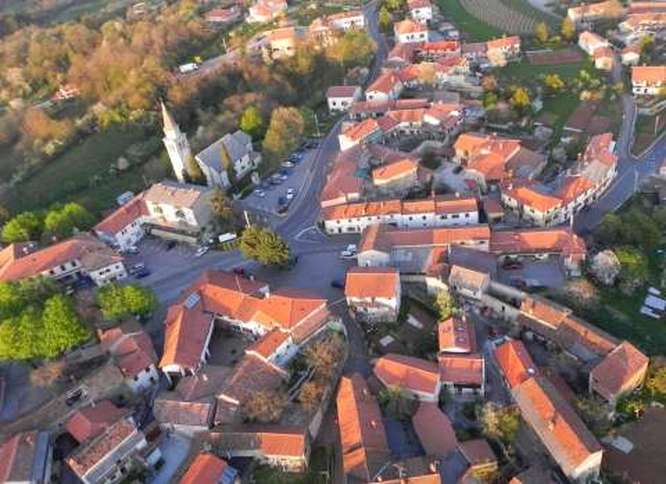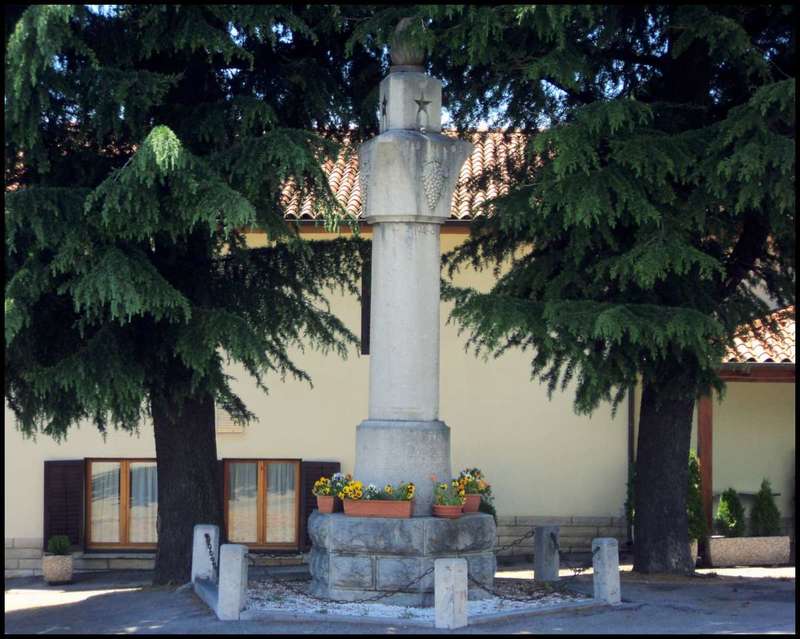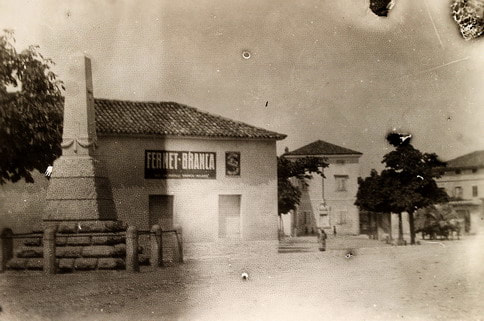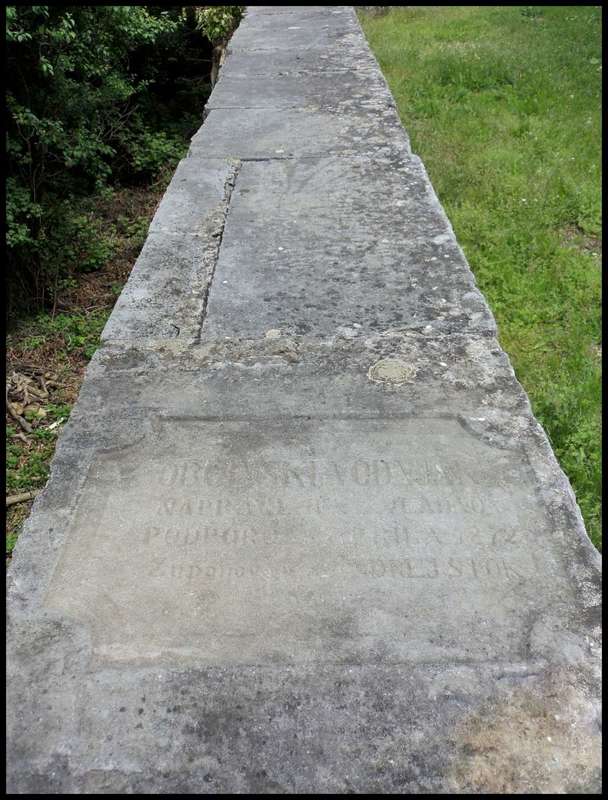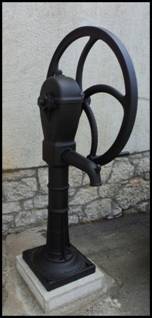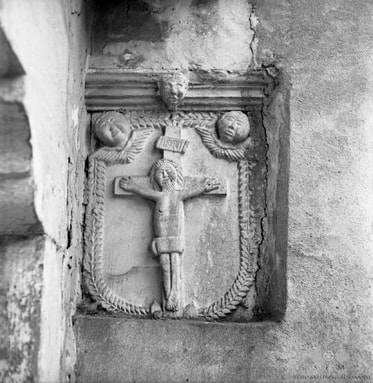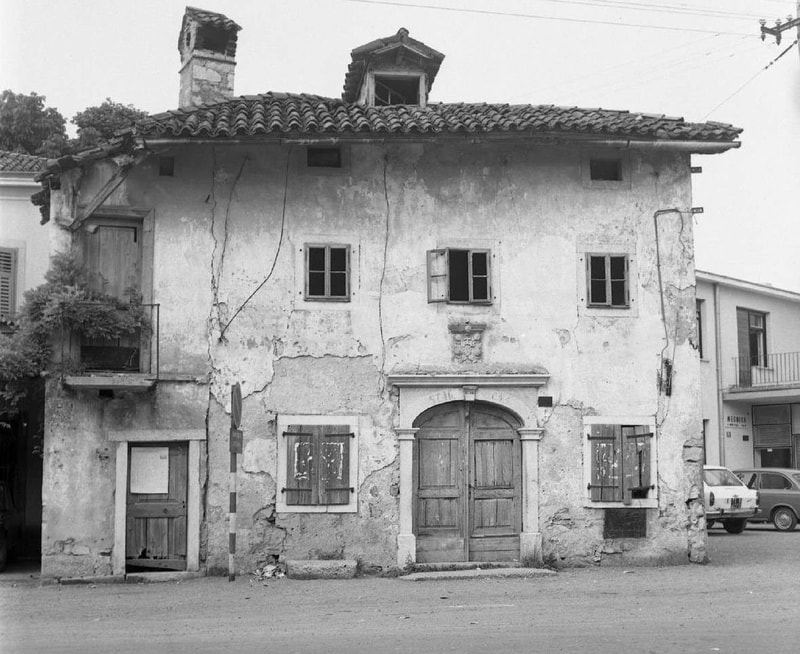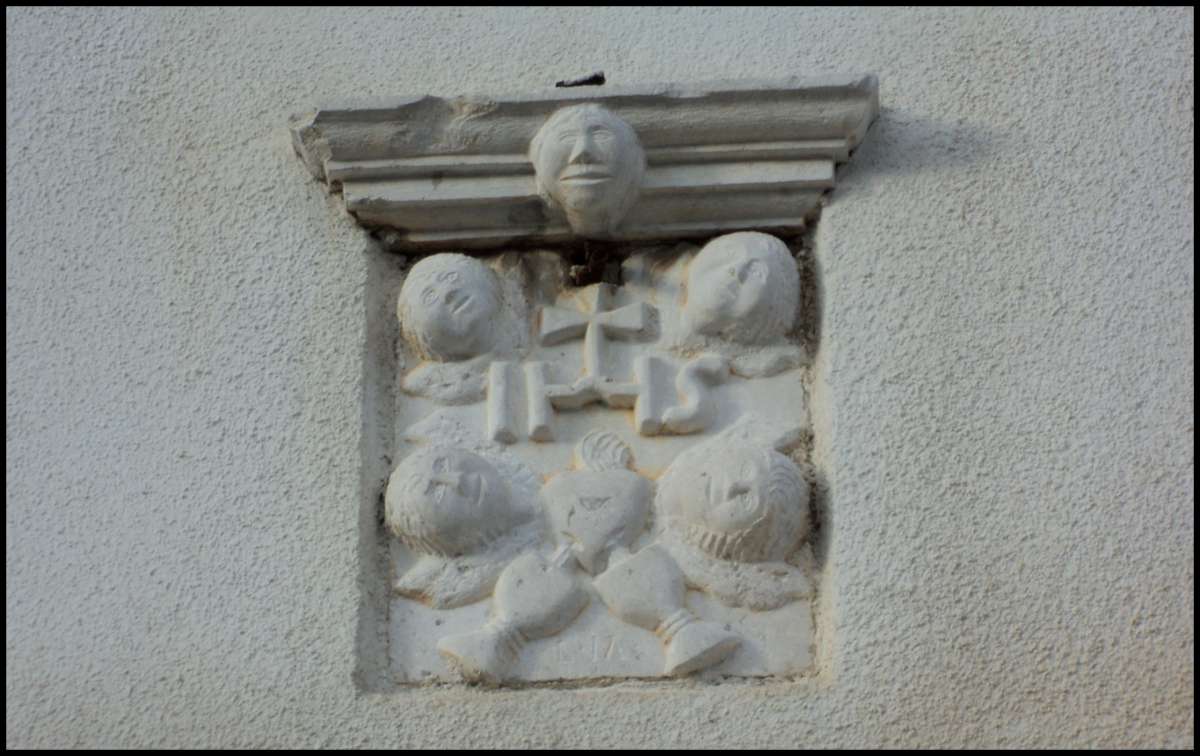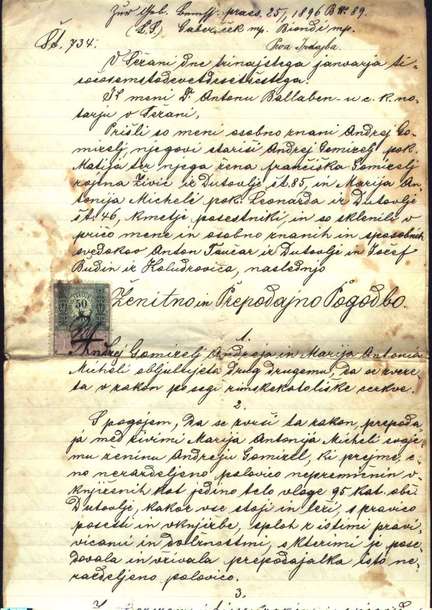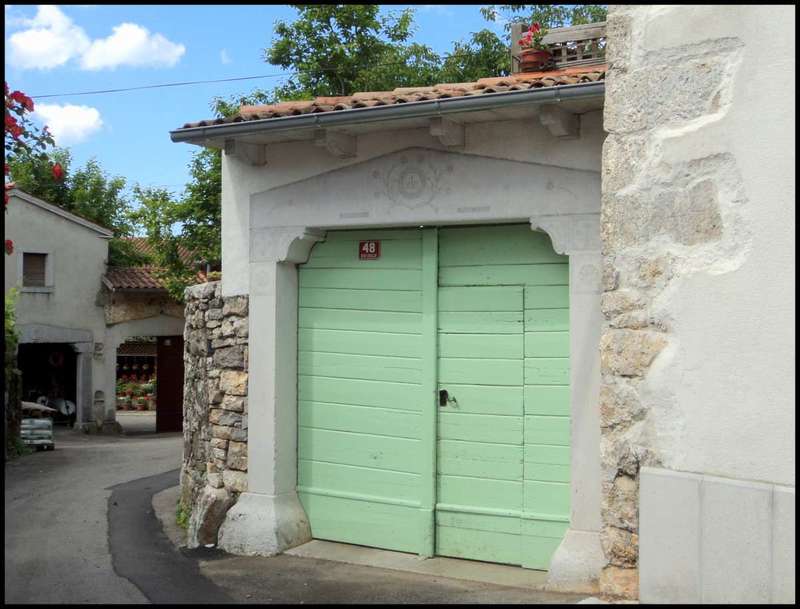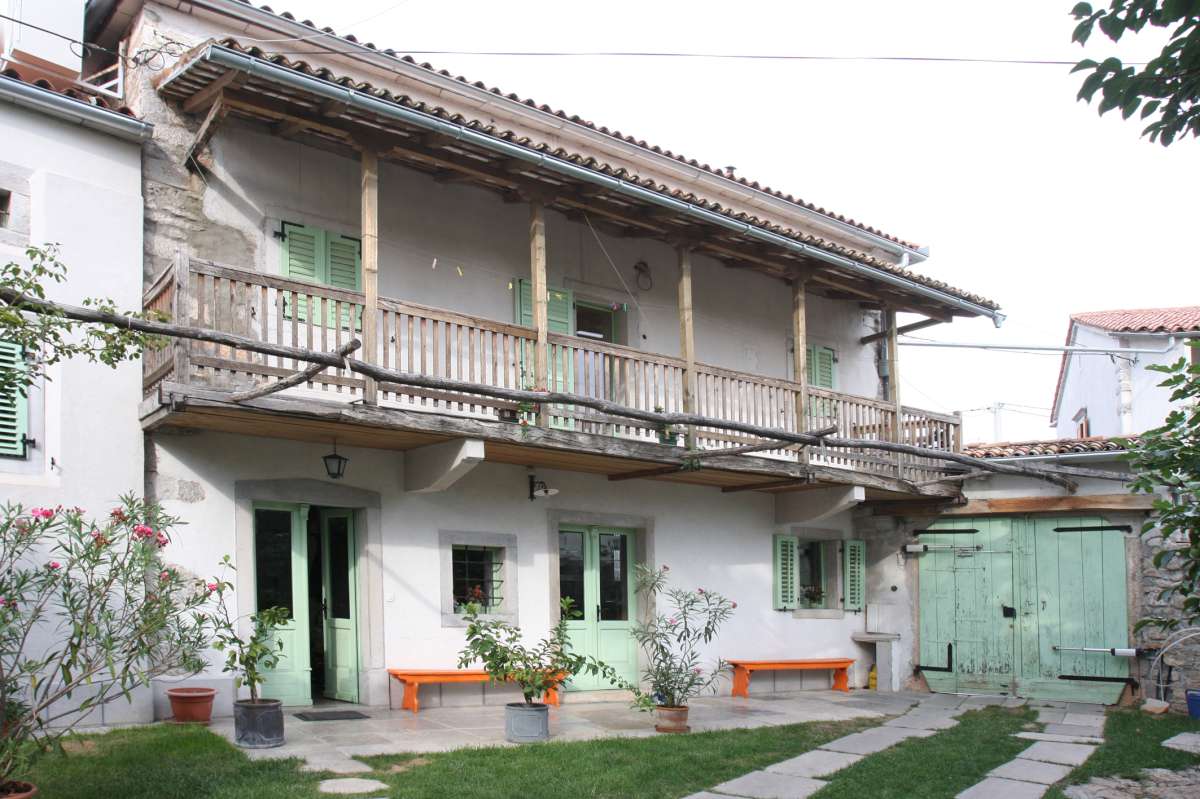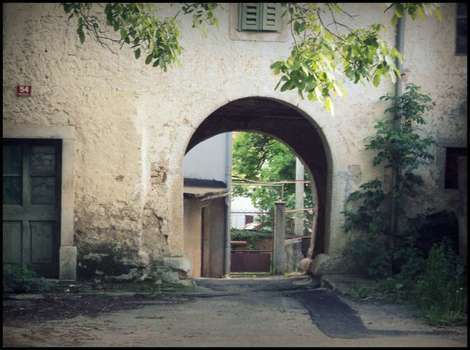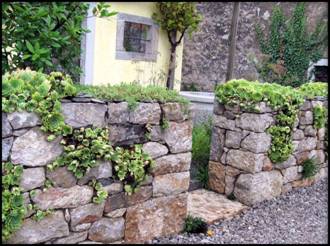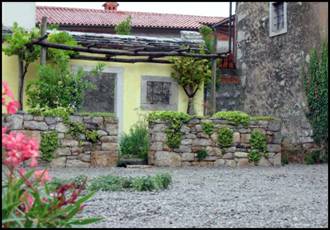
Village square
The Dutovlje village square is always full of people because it features a church, a National Liberation Movement memorial, shops, cafés and restaurants as well as a bank, an insurance company, the seat of the Dutovlje Local Community and the Tourist and Information Centre
Village square
National Liberation Movement memorial
The National Liberation Movement memorial is located in the middle of the village in the village square, opposite the St. George church and next to the crossroads towards Repentabor. The memorial is constructed as a stone monument with a base and a capital, which features a block with a star and a torch. At the base, there is an inscription in memory of all the fighters, hostages and victims from Dutovlje, Kreplje and Godnje during the National Liberation Movement between 1941 and 1945. It was constructed in October 1952 and is entered in the in the Register of Immovable Cultural Heritage of the Republic of Slovenia.
Before the National Liberation Movement memorial was constructed at this location, a memorial to Picchi, the Carabinieri brigadier who was killed in 1921 in Skopo, stood here. The memorial was called “Piči” by the locals.
Before the National Liberation Movement memorial was constructed at this location, a memorial to Picchi, the Carabinieri brigadier who was killed in 1921 in Skopo, stood here. The memorial was called “Piči” by the locals.
The National Liberation Movement memorial, which was constructed in 1952 | Picchi memorial, which stood here until 1950
Fragments of the communal well
Behind the National Liberation War memorial, a well dating to 1872 used to stand. Its traces are still visible today. In addition to the cast-iron water pump, the inscription plate was also preserved because it was accidentally built in the northern part of the church wall.
The inscription plate and the restored cast-iron water pump wheel
The Blokar relief
|
Outside of the Blokar house across the church, an old gate from 1930s withstood the test of time and is distinguished by a classicistic triangular face with the Christ’s monogram (IHS).
The house’s symbol was also preserved. It features a stone relief on which we can see Christ on the cross and three fat angel heads. This is the work of an unknown sculptor with extraordinary talent and should protect the house from evil. It is believed that the relief was done in the same time as the one above the butcher’s shop (around 1835) because there are significant similarities. Art could certainly be found in Dutovlje. Such creations showed the wealth and importance of individual homesteads. |
Stone relief next to the Blokar entrance
|
Relief above the butcher’s shop entrance
The building with a stone relief above the entrance is located at the very centre of the village square and currently houses a butcher’s shop. The relief shows the Christ’s monogram (IHS), four angel heads and a heart, from which blood is pouring into two chalices. The relief has the acronym L. M., which points at the trader named Leonardo Micheli who used to live in this house. He was a descendant of an immigrant from Cavezzo, a town on the right bank of the Tagliamento in Carnico. Leonardo Micheli was born in 1830 in Dutovlje.
He commissioned the relief with an unknown stonecutter in 1853, on the same year as when the house was built.
He commissioned the relief with an unknown stonecutter in 1853, on the same year as when the house was built.
The Lovro Žvab birthplace
Lovro Žvab, the former Slovenian cultural and historical publicist with the local name “Roštov”, was born in Dutovlje in the village square. The Rošt Homestead, which is located next to the memorial, had the house number 63. At a later time, Anton Kosovel, the headteacher and father of the poet Srečko Kosovel, lived here. He was a conductor, so his house was often used for singing practice.
Tool gate
The shape of the former toll gate next to the Bunčetovi Homestead demonstrates that vibrant traffic used to pass through Dutovlje, where profitable charges for shipped goods were collected.
Pepa’s Karst Garden in the Bunčetovi Homestead yard
The Pepa’s Karst Garden is an authentic Karst garden that presents the tale of Karst and its people. In 2009, it received the highest grade and won the golden medal at the Hampton Court Palace Flower Show in London in the category of small gardens.
In his authentic Karst garden, Borut Benedejčič, the conceptual designer, wanted to present the preservation and protection of natural and cultural heritage as well as the preservation of Karst as a unique example of a cultural area where tradition is equally important as art.
The Pepa Karst Garden is a special memorial that includes the typical Karst construction and the autochtonous vegetation.
Pepa is an old woman that lives in this house and gives her character to the garden. She adheres to the rules of tradition and instructions from the nature. Her life demonstrates great respect for the coming generations and awareness of our legacy to them. She strives for protection of the Karst landscape and heritage protection. You can visit her in the yard of the Bunčetovi Homestead where she will share memories from her youth and stories about Karst and its beauty.
In his authentic Karst garden, Borut Benedejčič, the conceptual designer, wanted to present the preservation and protection of natural and cultural heritage as well as the preservation of Karst as a unique example of a cultural area where tradition is equally important as art.
The Pepa Karst Garden is a special memorial that includes the typical Karst construction and the autochtonous vegetation.
Pepa is an old woman that lives in this house and gives her character to the garden. She adheres to the rules of tradition and instructions from the nature. Her life demonstrates great respect for the coming generations and awareness of our legacy to them. She strives for protection of the Karst landscape and heritage protection. You can visit her in the yard of the Bunčetovi Homestead where she will share memories from her youth and stories about Karst and its beauty.
Sources:
- Historical Mosaic of the Primorska Region, Albin Kjuder 1956–1960
- Register of Immovable Cultural Heritage
- Volnik, Miloš Stankovič 2012
- Ivan SEDEJ, Hundred Most Beautiful Farmhouses in Slovenia (Sto najlepših kmečkih hiš na Slovenskem), Ljubljana 1989
- http://giskds.situla.org/giskd/, (24 May 2013)
- Albin KJUDER, Historical Mosaic of the Primorska Region with emphasis on the Upper Karst, Sežana 1972
- Miloš STANKOVIČ, Volnik, Dutovlje 2012
- Ivan VOGRIČ, Lovro Žvab, Levstikov prijatelj, Sežana 2012
Photographs:
-Bogdan Macarol
-Kristjan Jazbec
-Miloš Stankovič
-Slovene Ethnographic Museum
- Historical Mosaic of the Primorska Region, Albin Kjuder 1956–1960
- Register of Immovable Cultural Heritage
- Volnik, Miloš Stankovič 2012
- Ivan SEDEJ, Hundred Most Beautiful Farmhouses in Slovenia (Sto najlepših kmečkih hiš na Slovenskem), Ljubljana 1989
- http://giskds.situla.org/giskd/, (24 May 2013)
- Albin KJUDER, Historical Mosaic of the Primorska Region with emphasis on the Upper Karst, Sežana 1972
- Miloš STANKOVIČ, Volnik, Dutovlje 2012
- Ivan VOGRIČ, Lovro Žvab, Levstikov prijatelj, Sežana 2012
Photographs:
-Bogdan Macarol
-Kristjan Jazbec
-Miloš Stankovič
-Slovene Ethnographic Museum
